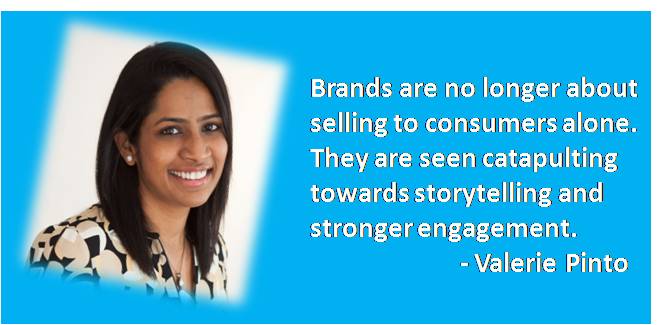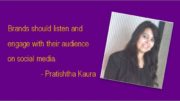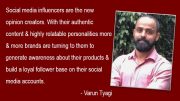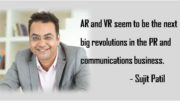There is no better time for the PR industry to come out of its slumber and take advantage of the way the communication landscape is fast changing around us. Brands are no longer about selling to consumers alone but are seen to be catapulting towards storytelling and stronger engagement. The growing influence of influencers has never been so profound as it is today. My experience at Cannes Lions has made it clear that every type of communications, from PR to advertising, is becoming a mashup. The definition of integrated has shifted, from “earned, paid and owned”, to being about solutions that reach out to and are interesting to more stakeholders than just the target market, across society and politics. This also means encouraging integration between our clients’ departments, bringing in R&D and sustainability as well as marketing and communications, and combining all this knowledge to help clients solve business problems.
To win at Cannes Lions is no mean task. Firstly, one must clearly define the context of the situation from a cultural perspective. You have a jury constituted from representatives of 22 countries that sit around a table and judge your work. If they don’t understand the cultural relevance of your work, you definitely stand a chance of elimination. Secondly, being crisp and creative is very critical. Your entry should have a simple yet fresh idea which is creative in a very non complicated way. The jury is looking for fresh ideas, based on strong insights backed by data and analytics. Lastly, the aspect that was most focused on was the ability to tell a story that impacts business or society at large. Content and engagement should be the heart of the campaign but with an end purpose or goal. It should be sustainable and scalable.
The jury is definitely not interested if your campaign or idea, blew up the internet with likes and shares and posts, neither are they interested in the column centimeter space you have generated for your client through media impressions. What they want to see are campaigns that impact lives. Campaigns that have a larger purpose and that showcase the Brand as being of relevance to the consumer and the society at large.
The key trends in PR at Cannes Lions 2016 would be:
- The use of big data and analytics to arrive at creative campaigns that deliver strong impactful results.
(ref House of Clicks – This case is about a housing portal that used data insights based on what young Swedish people were looking for in a house, and created a house of the future. This house generated so much interest and orders started to flow in. It not only created a house based on insights and data but it sparked a whole new business model for Hemnet Swedish property portal.) - Engaging consumers in the story was clearly the flavor of the season, and celebrity endorsements or celebrity generated content was a thing of the past.
(ref. #optoutside – a Retailer in the US decided to make a bold move and shut down their stores on black Friday and give their employees a paid vacation. They urged the employees to go outside and engage in physical activity with their families and friends. This generated so much conversation and awareness and provided for opportunity to generate content worth sharing. It also sparked discussion around labour laws, and the need for healthier living and outdoor activity which is the primary ethos of the brand.) - Using employees, and consumers to create content for the Brand in an authentic manner with reason and emotion won favour with the jury and was rated highly.
(ref. Almiral, – a pharmaceutical company who wanted to enter into cosmetic dermatology. But they wanted their people to feel deeply about the expansion and work towards making the business successful through emotional connect and strong understanding of consumer behavior. They got their senior talent to do up their faces as though they suffered from a dermatological problem and spent the day walking on the streets. The results were amazing and by the end of the exercise they had a far more convinced team that understood the problem better and could sell the product and service with conviction and passion. Being in the shoes of their potential customers gave them an experience that enabled them to talk to customers with care and higher sensitivity.) - Clever use of virtual reality to innovate on storytelling opened our minds to new mediums and made us view the future of PR in a different light.
(ref. Field Trip to Mars – Lockheed Martin wanted to show kids what it feels like to be on Mars. These kids will eventually be the first to visit Mars at some point. They used the first ever virtual reality concept with no headsets where they mapped the roads on earth to make it feel like the bus was travelling on Mars. A must watch experience to understand the concept. This giving rise to the future of leveraging virtual reality to tell stories through PR.) - Small Brands with big ideas that have the potential to scale won praise amongst the jury. We were surprised to see small Brands doing some great work.
(ref. edible six pack rings – A small brewery in America decided to get rid of the plastic that holds the beer cans together as they often are hazardous to marine life. Marine life get stuck in the plastic and often lose their lives. To make a difference to the environment at large, the brewery came up with the innovation to create the six pack from the waste of hops. A Six pack holder that is edible. The Marine life can eat the six pack holders and get nourishment from it. Thereby creating a prototype that sets an example for the world to follow and protects the environment at large. Apart from selling more beer, the little brewery was able to come up with a solution to help marine life and save the environment. What a cool idea.)
The use of big data and analytics, the need to engage with different departments within the Company in a communication program like research and development, and the use of new technology for story telling is the future of PR. Most Brands seem to be engaged in what I call “Responsible Selling”. It’s no longer about just selling a product for its features, but it’s about connecting with audiences for a larger purpose, or a larger good. Brands with a purpose driven by insight and backed by strong creative communication will be winners in the future.







Be the first to comment on "Lines are blurring and the canvas is fast changing: The time for PR is now!"